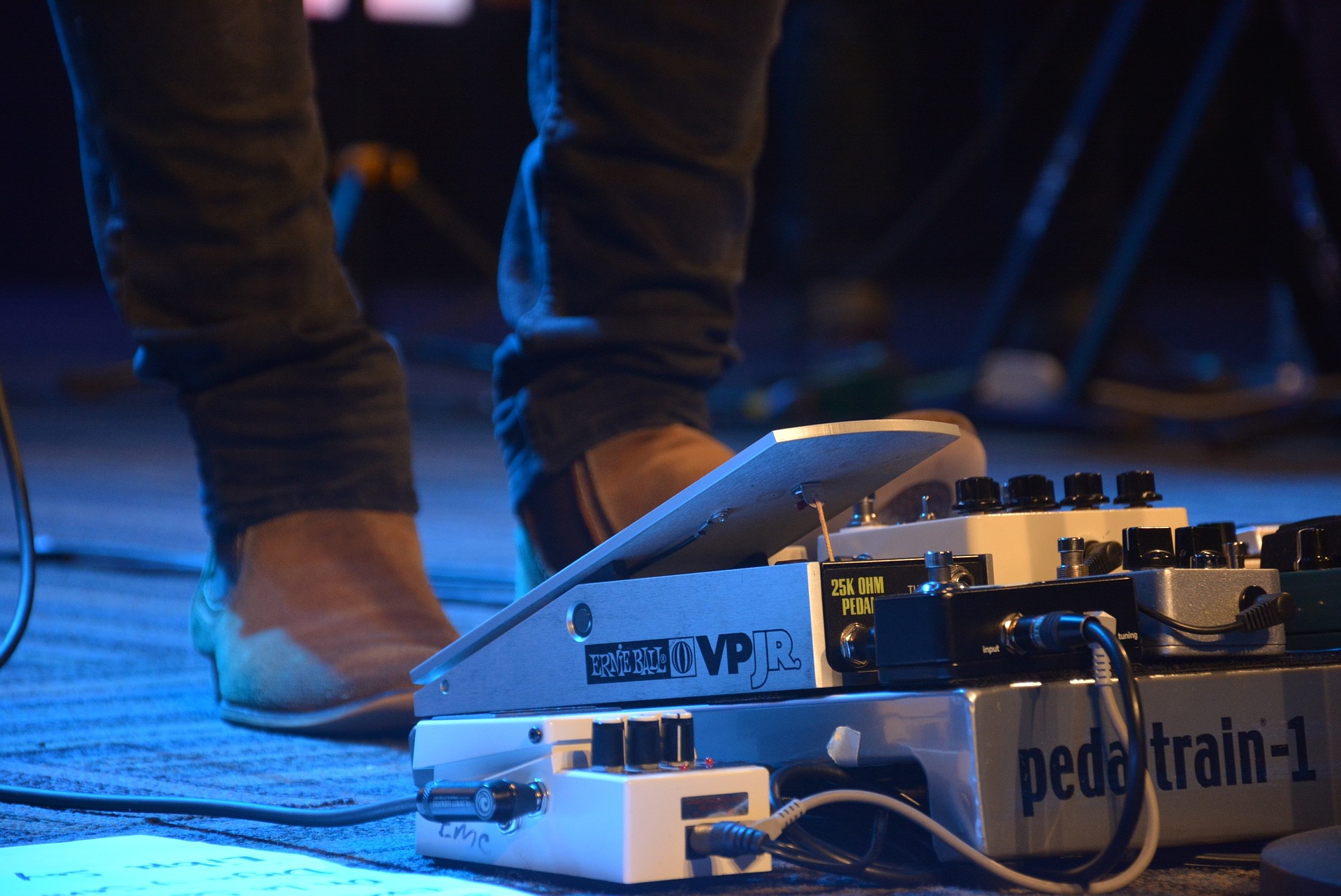Disclosure: Some of the links in this post are affiliate links. That means that if you click on a link and purchase an item, we may receive an affiliate commission at no additional cost to you. As an Amazon Associate I earn from qualifying purchases.
Wondering how to use a looper pedal like an expert? Have you finally got your hands on a loop pedal and want to make the most of it?
Looper pedals can be an invaluable tool for guitarists (as well as just really fun) and are one of the best tools out there for solo performers. However, the looper pedal can also be a confusing piece of technology when it comes time to actually perform or create with it.
Luckily, we’re here to be your guide. Below we’ll give you our 5 top tips for using your looper pedal effectively.
1. Record A Rhythm First
Recording a rhythm before a lead is a simple, yet important tip to remember. Think of the rhythm loop as your foundation for the rest of your project. This can really allow your creative juices to flow, while still being somewhat organized and playing with the right timing.
While you can create a rhythm by playing the chord progressions of your song, remember that it’s not always necessary. Creating a rhythm with your fingering hand covering up the strings on the neck can be great as well. This will give you a solid rhythm to lay down first which you can then layer chords and other parts on top of.
Creating a great rhythm to start with will make every other piece of the puzzle easier to add in, so make sure you take your time to get this first part right.
2. Be Certain Your First Loop is in Perfect Time
So you’ve made your rhythm loop, but in the second half of the progression, you’re a little out of time? If so, this will throw off your entire project, and cause a lot of headaches as you continue to add more layers. It’s better to make sure your first loop is in perfect time, as best as you can.
Rather than rushing through, only to find yourself cringing after you have finished your project, and then proceeding to erase everything you’ve made, just take your time and get it right the first time. Practicing and looping with a metronome can be a great idea that can help you improve your timing.
If you don’t already have a looper you’ll be using you may want to get one such as the Digitech JamMan Solo XT that has a metronome as well as multiple time signatures and rhythms built in.
3. Record Each Loop With a Specific Arrangement Purpose in Mind
If you lay down 4 loops, and all of them are ONLY leads, your project may sound cool, but it will get messy very fast. All great bands, or songs, you name it, sound great with some basic instrumental parts such as bass, rhythm, harmony, and lead.
First, play a solid rhythm for your first track. 
Then, after you’ve made a solid rhythm loop, try imagining yourself as a bass player. Lay down a bass track using the lower strings on your guitar. If you’ve never played bass, try researching a bit, and maybe listen to some bass players to get some inspiration.
After you’ve finished your rhythm and bass track, go ahead and lay down your harmony. Then, finally, you can lay down that lead part that you’ve been playing in your head over and over again for weeks.
While you can record lead parts as part of the loop, you can also just jam with the full band backing you’ve created for yourself.
4. Rearrange the Path of Your Pedal Board
Although you may think your pedals are perfectly fine where they’re at on your board, you may want to rethink it some. Although this is a simple tip that many guitarists may already know, it’s a great tip for those of you who are just starting to fill in your pedal board case.
Do you ever wonder why none of those awesome effects are making it to the loops you’re creating?
If you have multiple pedals before or after the signal chain, be sure to put your looper pedal at the end of your chain. This way, you’ll get all those nice effects you’ve been obsessing over.
All that being said, it also depends on what exactly you want to loop. Try getting creative and do some experimenting with the placement of your looper pedal in your signal chain.
5. Prepare Fully Before You Use It On Stage
Even some of the best guitar players can find it to be a struggle to use a looper pedal live.
The bottom line is that whether you’re live looping solo or playing with a band, you need to practice. While a looper allows you to experiment “on the fly” that doesn’t mean that you can take your looper on stage and expect it to go well.
This is especially true if you’re planning on using a looper pedal in a band setting. While your buddies may be great musicians, keeping in time with your loop can be very difficult in that kind of environment. If you are playing in a band setting and everything goes haywire, don’t fret! Some looper pedals have a trigger function, aka restart button. Basically, tap the button once and it immediately starts at the beginning of the loop.
Guitarists who are best with using loopers get the basics down pat when they’re at home. Only then are they comfortable with creating intricate and improvised looper jams on stage.
Teaching Yourself How to Use a Looper Pedal
There’s a lot more to know before you’ll be able to craft compelling and unique looper performances without a hitch. The above tips will set you in the right direction, though.
Make sure you consider the tips above if you want to learn how to use a looper pedal well. Use them to start creating interesting and dynamic performances and practice sessions. Remember, however, that much of what you learn will happen as a result of experimentation and plenty of “happy accidents”.
Ready to buy a looper pedal? Click here to see our list of the best looper pedals.

Hi, I’m Harrison! I created this website to help musicians navigate the ins and outs of their craft and to help them choose new instruments and gear to add to their collection. I have 15 years of experience as a guitarist and singer and have also played many other instruments throughout the years including the bass guitar, piano, banjo, mandolin, and harmonica.

